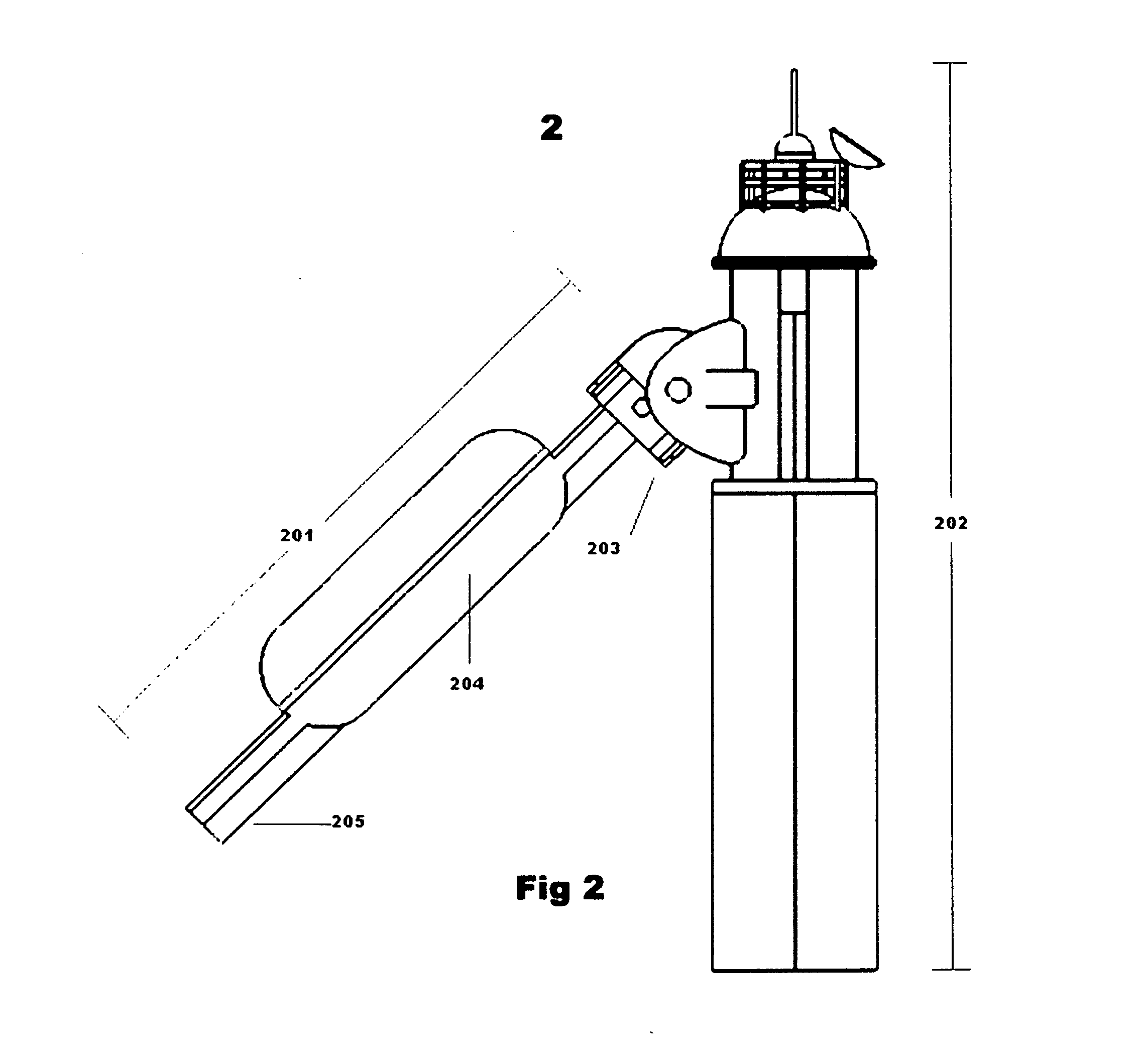Trimming Right-Angularly Reorienting Extending Segmented Ocean Wave Power Extraction System
a technology of segmented ocean wave and power extraction system, which is applied in the direction of buoyancy control, mechanical equipment, machines/engines, etc., can solve the problems of complex multi-factored actual sea state, dangerous and difficult to predict, and the problem of not fully solving, so as to shorten the functionality
- Summary
- Abstract
- Description
- Claims
- Application Information
AI Technical Summary
Benefits of technology
Problems solved by technology
Method used
Image
Examples
Embodiment Construction
[0055]FIG. 1 represents right angularly reorienting buoyant semi-submersible segment 101 horizontally connected to an interlinking segment 102 via a variably facing restrictive shoulder 103. A buoyant float 104 is linearly accelerated along the primary axis of armature 105. This armature, called the sub-buoy's upper arm, actually contains one or more telescoping elements nested within it. These allow for the float to ride further out over the water's surface in the horizontal direction.
[0056]In FIG. 2 float 204 has been retracted part way back along forearm 205 toward the variably facing restrictive shoulder 203 connected to second segment 202, causing outer end of the right angularly reorienting buoyant semi-submersible segment 201 to partially submerge in order to cope with heavier seas. In this position segment 201 can still oscillate within the restrictive shoulder; however, forces are buffered due to the friction involved in displacing water, so this transitional state is prima...
PUM
 Login to View More
Login to View More Abstract
Description
Claims
Application Information
 Login to View More
Login to View More - R&D
- Intellectual Property
- Life Sciences
- Materials
- Tech Scout
- Unparalleled Data Quality
- Higher Quality Content
- 60% Fewer Hallucinations
Browse by: Latest US Patents, China's latest patents, Technical Efficacy Thesaurus, Application Domain, Technology Topic, Popular Technical Reports.
© 2025 PatSnap. All rights reserved.Legal|Privacy policy|Modern Slavery Act Transparency Statement|Sitemap|About US| Contact US: help@patsnap.com



